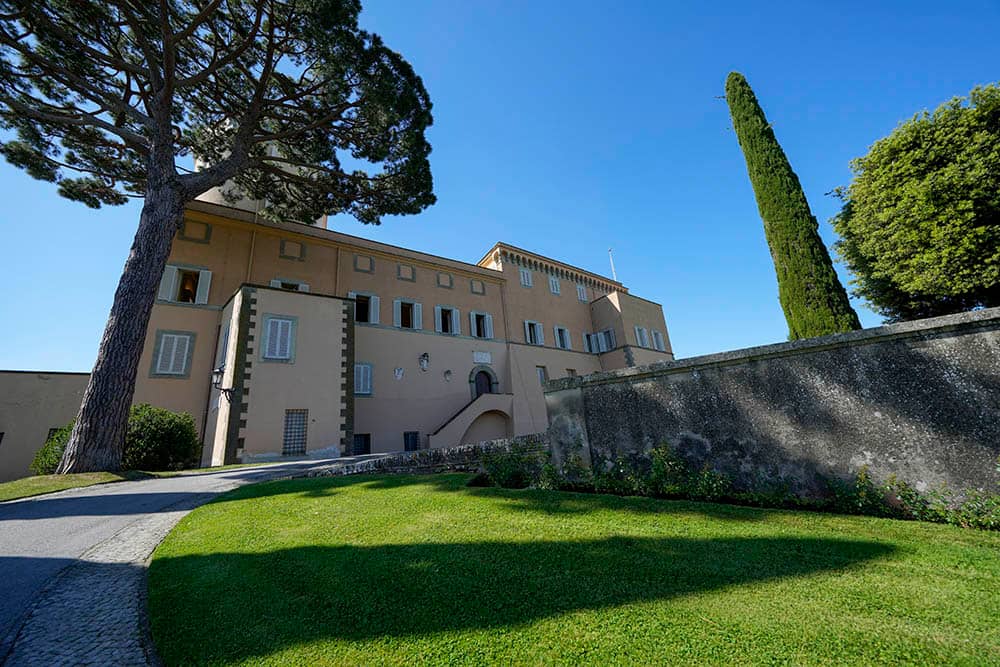ROME – Pope Francis has invested synods of bishops with a relevance not seen in centuries, so perhaps it’s only fitting that he now has his own version of the most renowned summit of them all, the infamous “Cadaver Synod” of 897.
Believe it or not, the major headline out of Monday’s action at the Oct. 6-27 Synod of Bishops on the Amazon involved a video of two men stealing an indigenous statue of a naked pregnant woman that had been on display in a Roman church and then, bit by bit, tossing the images into the Tiber River in front of the papal fortress of Castel Sant’Angelo.
As of this writing, some 115,000 people had watched the video of the incident on Youtube.
A Vatican spokesman, Italian layman Paolo Ruffini, told reporters Monday in reaction that the theft and destruction of the statue was “an act of defiance” and a “stunt” which was “against the spirit of dialogue,” while Italian Jesuit Father Giacomo Costa helpfully added that “stealing objects is never constructive.”
On Tuesday, indigenous participants in the Amazon synod released a statement denouncing the incident for reflecting “religious intolerance, racism, vexatious attitudes, which … demonstrate a refusal to build new paths for the renewal of our Church.” They also warned that “these acts can be repeated or escalate, and generate greater effects.”
The incident came amid a steady drumbeat of criticism by traditionalist Catholic media outlets styling the statue, which had popped up during an Oct. 4 Vatican prayer ceremony involving Pope Francis as well as the synod’s opening procession, as a pagan image and suggesting that its presence in Catholic sacred spaces and rites amounted to sacrilege.
As the late Cardinal Francis George once said, everything in the Catholic Church has happened at least once. There is actually precedent for Monday’s mise-en-scène, involving tossing not a figurine into the Tiber but a pope.
In 896, a new pontiff named Stephen VI had risen to power under the patronage of Rome’s influential Spoleto family. The clan was still nursing a long-running grudge against an earlier pope, Formosus, who had backed their Carolingian rivals as Holy Roman Emperor.
Thus it was that a year later, Stephen ordered the remains of Formosus to be dug up and placed on trial. The corpse was propped on a throne during the proceedings and a deacon was even appointed to speak for the defense – though, as historians note, not terribly aggressively.
Stephen accused Formosus of various forms of heresy and usurpation, and the deceased pontiff was dutifully found guilty. His papacy was declared null, three fingers of his right hand used to administer blessings were sliced off, and his remains were then unceremoniously tossed into the Tiber, in keeping with longstanding Roman custom when the aim is a damnatio memoriae, obliterating even the memory of a vanquished foe.
For sure, there are differences between 1,100 years ago and Monday.
For one thing, nobody tossed the pope into the Tiber this time, although that contrast may be less significant than it seems. Obviously, the people behind Monday’s mini-drama saw the statues as symbols of what they don’t like about Francis – his embrace of non-Christian cultures and faiths, his progressivist “third world” agenda, his indifference to the usual pomp and circumstance of traditional worship, and so on.
In other words, had those two men had the option of tossing Francis himself into the river, they might well have taken it. The statues were simply as close as they were realistically going to get.
Perhaps the more relevant difference is that what happened in 897 wasn’t really a “synod” at all, even if Stephen did compel a handful of prelates to be present in order to lend the proceedings some superficial credibility. At most what happened could be called an ecclesiastical trial, although even that’s a stretch.
Really, it was just a farce performed to score a few cheap political points – which, on second thought, perhaps suggests it wasn’t that different from what happened Monday after all.
What remains to be seen is whether the aftermath of Monday’s action will bear any resemblance to what happened to Pope Stephen after the Cadaver Synod.
The whole affair soured public opinion on the new pope, and rumors began to swirl that the body of Formosus had washed up on the banks of the Tiber with the power to perform miracles. A popular uprising led to Stephen’s arrest, and he was strangled to death in prison just about six months later.
Probably, nobody’s going to strangle the guys who stole the statue on Monday – though some overheated twitter discussion indicates there are at least a few souls out there capable of it. However, we’ll see if the act nonetheless boomerangs on the pundits and media outlets who whipped people into a frenzy, offering a sort of theatrical reductio ad absurdum on the whole debate.
In the meantime, the Amazon Synod will roll on, presumably producing a cluster of recommendations to Francis that may provide the blueprint for a new pastoral approach in the world’s largest rainforest. It’s serious business, being conducted by people in earnest about what’s at stake.
Nevertheless, years from now what people may actually remember about this synod won’t be its conclusions, but its cadaver … which, if you think about it, is pretty much the opposite of what a well-executed damnatio memoriae is actually supposed to accomplish.
Follow John Allen on Twitter: @JohnLAllenJr
Crux is dedicated to smart, wired and independent reporting on the Vatican and worldwide Catholic Church. That kind of reporting doesn’t come cheap, and we need your support. You can help Crux by giving a small amount monthly, or with a onetime gift. Please remember, Crux is a for-profit organization, so contributions are not tax-deductible.
















